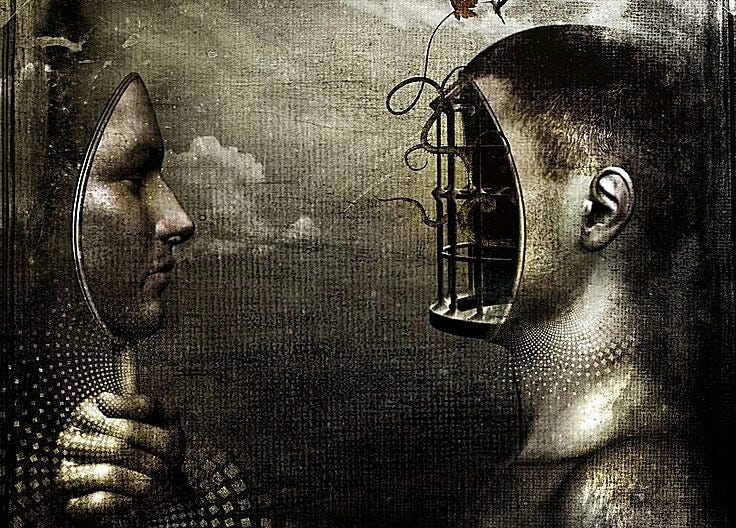Getting you to feel for me
Unpacking the common defense mechanism that occurs in relationships called projective identification; when we induce and evoke our own feelings in another person.
Picture this. You’re feeling frustrated with a friend of yours. You don’t know how to share your true feelings with them. It may be because you don’t know what to say or because you don’t have a lot of practice being vulnerable. It may also be because you’ve never had someone model it for you. Instead of communicating your frustrations openly, you show up late to your next hangout. That’ll show them.
When you arrive late, your friend is visibly frustrated with you. You now see your own anger, but on their face. Seeing your anger on their face allows you to notice, identify, and confront your true and honest feelings. This is projective identification— getting you to feel for me.
Projective identification is a normal defensive strategy that occurs in all types of relationships. It is a form of psychological projection that allows us to identify our own thoughts, feelings, and beliefs by seeing it evoked in other people.
Here’s another example: Let’s say you’re feeling stuck and stagnant in your intimate relationship but you don’t have language to describe how you’re feeling. You notice things are starting to change; you become less enthusiastic about your relationship traditions, you pull back from suggesting date night ideas, and you stop sharing stories from your day.
Your partner, noticing these changes, starts to grow frustrated, worried, and confused. They start to talk about how they’re feeling stuck and stagnant and that you’re not giving as much to the relationship as you once did. In this situation, your original beliefs and behaviour induced a feeling of complacency and confusion in your partner, so you could better understand and experience how you were feeling.
This pattern of defenses is a common way we identify our own feelings by seeing it displayed in the feelings, expressions, and behaviours of others. We do this as a way to safely experience, re-experience, and diffuse our uncomfortable feelings. We do this by creating a model that allows us to witness and observe how we’re feeling inside. This is not done with ill-intent. It is a healthy way we confront our uncomfortable and sometimes unbearable feelings.
When we are unable to confront our true feelings, they keep a hold on us and exhibit unconscious control over our lives. They keep us stuck repeating patterns and recreating scenes from the past in the hopes that we may find completion by recreating it in the present. In therapy, if approached through a psychodynamic lens, we help people make these unconscious patterns more conscious as a way of confronting their honest and true thoughts, feelings, and beliefs.

When we become aware of how our projections are showing up in our relationships, we can start to take ownership for how our behaviour may impact others. By seeing ourselves more clearly, we begin to clearly see one another. By seeing others more clearly, we get more exposure and practice with vulnerability and radical honesty. In turn, we become more honest and clear about who we are and what we have to offer in our relationships. This is how we become better friends, family members, partners, and community members.
The best way to move through our projections, and specifically our projective identifications, is to build awareness and cultivate compassion for the self. When we reflect on how we’re behaving or showing up in relationships, we can better understand our situation and ourselves. It is helpful to do this with a skilled therapist so they can provide some objectivity to your situation and help you develop a compassionate frame through which to view your thoughts, feelings, and behaviours.
In truth, this work is deep and often difficult. It can be hard to confront the parts of us that express themselves in confusing and sometimes odd ways. Nonetheless, we can give ourselves room to be human and resist the urge to dissect and pick apart every behaviour and every pattern.
At the end of the day, we are all participants in the messy, difficult, and complex project of being human in today’s world. When we can navigate our toughest moments with grace and approach our most confusing moments with kindness, we afford ourselves another opportunity to let compassion be our guide.
Sometimes we can clearly identify how we feel. And sometimes we need to see our feelings displayed and cast onto someone else in order to get the full picture. Though it is not wrong or deceitful, we should remember to give ourselves grace when our own confusion and uncertainty causes us to mirror and evoke our own internal world onto the world around us. We should remember that we don’t have to work our feelings out on others in order to clearly and correctly label how we’re feeling inside.
It takes practice, but I know we can get there.
I’m rooting for us,
Jake





